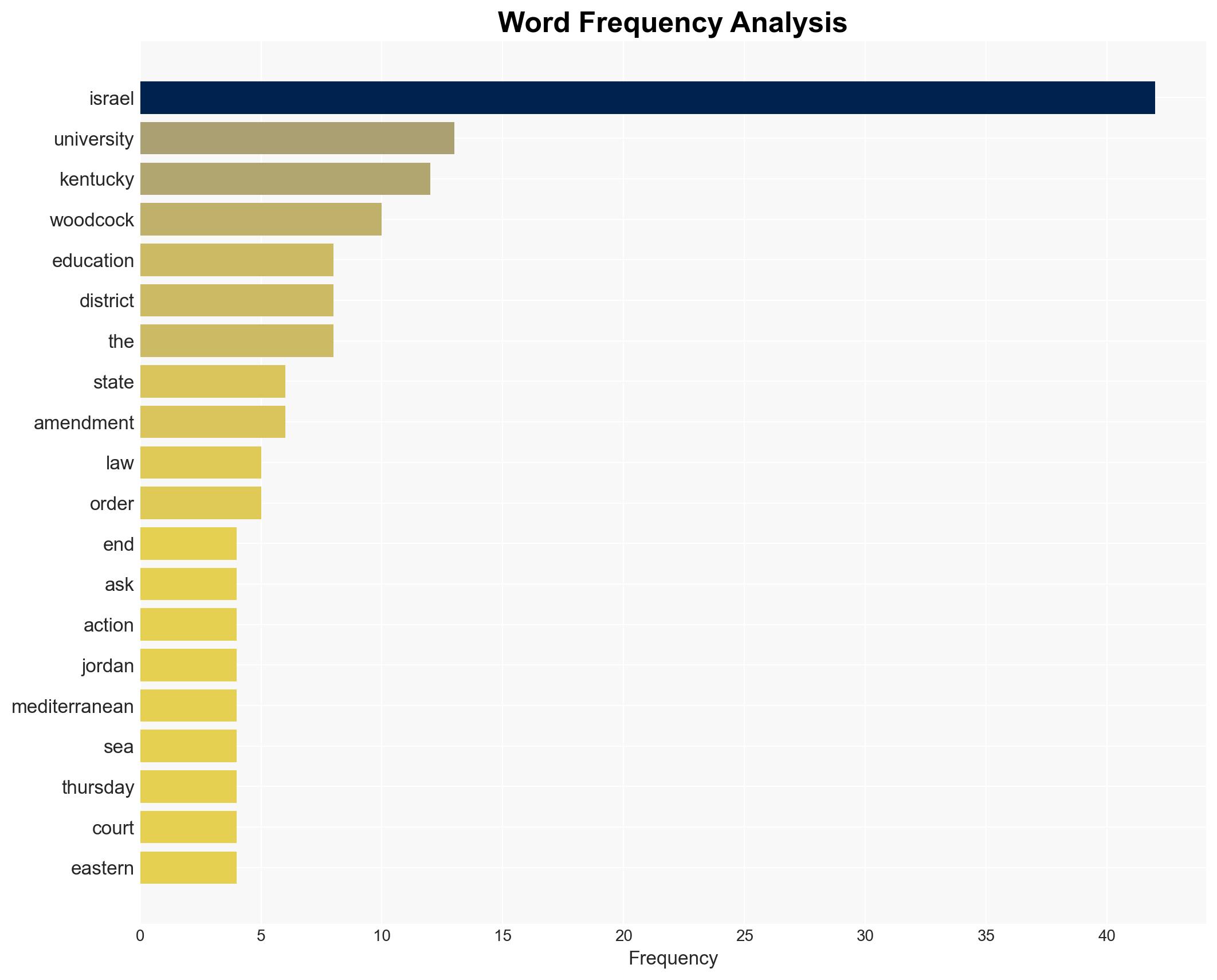Ky Professor Reassigned After Call for War on Israel Sues – Inside Higher Ed
Published on: 2025-11-17
AI-powered OSINT brief from verified open sources. Automated NLP signal extraction with human verification. See our Methodology and Why WorldWideWatchers.
Intelligence Report: Strategic Analysis of the University of Kentucky Professor Reassignment Case
1. BLUF (Bottom Line Up Front)
The most supported hypothesis is that the University of Kentucky’s actions are primarily driven by compliance with state and federal mandates regarding antisemitism definitions, rather than a direct suppression of free speech. Confidence Level: Moderate. Recommended action includes monitoring the legal proceedings for broader implications on academic freedom and state compliance with federal guidelines.
2. Competing Hypotheses
Hypothesis 1: The University of Kentucky reassigned Professor Ramsi Woodcock due to pressure to comply with state and federal mandates on antisemitism, particularly the IHRA definition, to avoid potential funding withdrawal.
Hypothesis 2: The reassignment is a direct attempt by the university to suppress speech critical of Israel, reflecting a broader institutional bias against anti-Zionist perspectives.
Hypothesis 1 is more likely due to the explicit mention of state legislation and federal funding threats in the context of enforcing the IHRA definition. Hypothesis 2 lacks direct evidence of institutional bias beyond compliance with external pressures.
3. Key Assumptions and Red Flags
Assumptions: It is assumed that the university’s actions are primarily motivated by legal compliance rather than ideological alignment. It is also assumed that the IHRA definition is being enforced uniformly across similar institutions.
Red Flags: The potential for selective enforcement of the IHRA definition as a tool for political suppression. The lack of transparency in the university’s decision-making process could indicate underlying biases or external pressures.
4. Implications and Strategic Risks
The case could set a precedent affecting academic freedom and speech on controversial topics, potentially leading to increased self-censorship among academics. Escalation scenarios include political backlash from free speech advocates, potential legal challenges to state and federal mandates, and reputational damage to the university. There is also a risk of increased polarization on university campuses regarding Middle Eastern geopolitics.
5. Recommendations and Outlook
- Monitor the legal proceedings for outcomes that could influence state and federal policy on academic speech and antisemitism.
- Engage with academic institutions to develop guidelines that balance free speech with compliance to antisemitism definitions.
- Best-case scenario: The court clarifies the balance between free speech and antisemitism definitions, leading to clear guidelines for universities.
- Worst-case scenario: The case results in increased suppression of academic speech and a chilling effect on controversial discourse.
- Most-likely scenario: The case prompts a review of current policies without significant changes to existing practices.
6. Key Individuals and Entities
Ramsi Woodcock, Linda McMahon, University of Kentucky, International Holocaust Remembrance Alliance (IHRA).
7. Thematic Tags
Regional Focus, Regional Focus: United States, Middle East
Structured Analytic Techniques Applied
- Causal Layered Analysis (CLA): Analyze events across surface happenings, systems, worldviews, and myths.
- Cross-Impact Simulation: Model ripple effects across neighboring states, conflicts, or economic dependencies.
- Scenario Generation: Explore divergent futures under varying assumptions to identify plausible paths.
Explore more:
Regional Focus Briefs ·
Daily Summary ·
Support us
·





